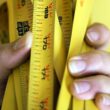Confused about whether to use the word “free” in a subject line? Maybe you should study up on behavioral economics.
That’s the science being used by retailers to predict customer behavior, according to Meg Goodman, managing director of Jacobs & Clevenger, a Chicago-based relationship marketing agency.
It begins with the mistaken idea that consumers base most of their purchasing decisions on rational thought. Not so, Goodman writes in Retail Touchpoints. On the contrary, Gallup research shows that economic decision-making is 70% emotional and 30% rational.
What does this mean in practical terms? Goodman lists these techniques:
The Zero Price Effect — Marketers assume that consumers are turned of by the word “free.” But Dan Ariely, a professor at Duke University, conducted an experiment in which he sold Lindt Truffles for 26 cents and Hershey kisses for one cent apiece, then reduced the price of each by one cent. He had a Hershey Kisses sellout on his hands.
“The most popular use of this theory is in the retail phrasing ‘buy one, get one free,’ Goodman observes. “Really, it should be listed as “50% off when you buy two,” but that doesn’t capture consumers’ imagination quite like the word “FREE.”
(This won’t necessarily work in email. Persado found that the word “complimentary” instead of “free” increases email engagement by up to 21%. And experts warn that the word “free” can land you in a spam box).
The Postponement Of Pain — If “free” doesn’t work for your brand, you might want to try “free for now.” In effect, this is a deferred pay option, like the kind offered by credit card companies.
The Aversion To Loss — Consumers don’t want to miss out on opportunities. And they fear loss. Listerine was on to this almost a century ago when it warned young women that bad breath could drive their boyfriends away, Goodman writes. So brands should highlight loss instead of gain, she adds. How? With simple tactics like “listing how much of a certain product is left in stock, having short sale windows or highlighting the risk of overpayment with competitors,” she continues.
The Isolation Effect — This entails making comparisons by price and other attributes. For example, Williams-Sonoma advertised a $275 bread maker next to a $429 version. Sales of the less expensive one doubled. And Anheuser-Busch InBev famous compared Bud Light to Miller Lite. The difference? Bud Light has no corn syrup. Another success.
‘These are not new ideas. Goodman notes that “marketers have been applying some of these behavioral economics theories for years.”
But she adds that “retailers can institute a more holistic and systematic approach to these marketing strategies to unlock a much greater value.”
(That also goes for brands that engage their customers with email. There’s a simple way to find out — conduct an A/B test to determine the most effective economic propositions and wording).
Thanks to Meg Goodman for explaining this tricky science.
This article originally appeared in EmailInsider.













